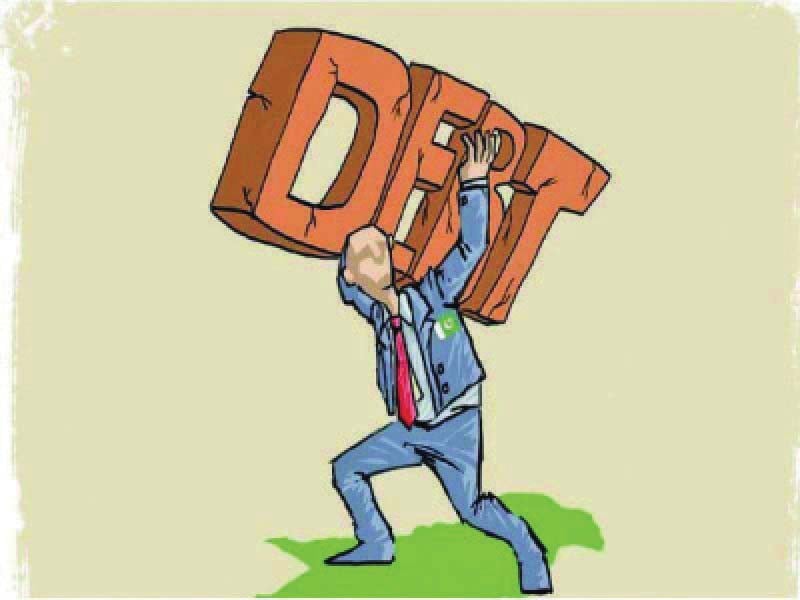
For the first time ever, Pakistan’s total debt and liabilities have crossed Rs50.5 trillion, an addition of Rs20.7 trillion under the current government alone, revealed the official figures released on Wednesday.
The State Bank of Pakistan (SBP) released the debt figures till September 2021, a day after Prime Minister Imran Khan described the increasing debt as a “national security issue”.
Figures showed that the total debt and public debt situation deteriorated during the tenure of current Pakistan Tehreek-e-Insaf (PTI) government.
Pakistan’s total debt and liabilities jumped to the record Rs50.5 trillion at the end of September 2021, an addition of Rs20.7 trillion in the past 39 months. There was an increase of nearly 70% in total debt of the country.
In June 2018, every Pakistani owed Rs144,000, which increased to Rs235,000 by September 2021, an additional burden of Rs91,000 or 63% during PTI’s tenure.
Like its predecessor, the PTI government too is running on foreign and domestic loans and has failed to enhance revenues to such levels where its debt burden can be reduced.
The situation is no different when it comes to the public debt, which is the direct responsibility of the federal government.
The government has added Rs16.5 trillion to the public debt during its tenure, which was equal to 165% of the debt the previous Pakistan Muslim League-Nawaz (PML-N) government acquired in five years.
The public debt increased to Rs41.5 trillion by September this year, an addition of Rs16.5 trillion during PTI’s tenure. Total public debt increased 66% from July 2018 to September 2021, showed the official bulletin.
The addition of Rs16.5 trillion to the public debt in the past 39 months was equal to what the last two governments of Pakistan Peoples Party (2008-2013) and PML-N (2013-2018) added in 10 years.
With the addition from fiscal year 2018-19 to September 2021, the total public debt as of June 30, 2021 increased to Rs41.5 trillion, or 77% of GDP, the central bank reported.
The PTI government added, on average, Rs14 billion a day to the public debt, which was more than double the daily average addition of Rs5.8 billion by the PML-N government.
When the PML-N government completed its five-year term, the total public debt stood at Rs24.95 trillion, or 72.5% of GDP.
In February 2019, PM Khan had vowed to bring the public debt down to Rs20 trillion. He had been very critical of the economic policies followed by the previous PPP and PML-N governments and had set up the Debt Inquiry Commission to investigate the reasons behind the addition of Rs18 trillion to the debt stock in 10 years. Despite completion of the inquiry, the premier has withheld the release of the report.
The accumulation of debt is a direct result of the gap between expenditures and revenues, which is widening due to the inelasticity of debt servicing and defence needs and the Federal Board of Revenue’s (FBR) failure to enhance tax collection significantly.
Under the IMF’s loan condition, the government will cut the contingency grants budget by Rs50 billion and the Public Sector Development Programme by Rs200 billion, which will slow down the journey towards development.
Debt breakdown
The federal government’s total domestic debt increased to Rs26.4 trillion, an addition of Rs10 trillion or 61% since June 2018. At the end of PML-N’s tenure, the domestic debt stood at Rs16.4 trillion.
The external debt of the federal government increased 77% to Rs13.8 trillion in the past 39 months. There was a net increase of Rs6 trillion in the external debt, largely due to currency depreciation and building of foreign currency reserves through borrowing.
At the end of PML-N’s tenure, the external debt had stood at Rs7.8 trillion.
The Rs13.8 trillion of external government debt does not include loans obtained for building forex reserves and under the currency swap arrangements. These loans are the responsibility of the central bank.
The steep currency depreciation also contributed to the federal government’s debt. By September 2021, the rupee-dollar parity stood at Rs170.37. In June 2018, the value of the dollar was equal to Rs121.54, showing a massive depreciation of nearly Rs49 or 41%. The current parity is around Rs175.
Total external debt and liabilities, which were $95.2 billion in June 2018, jumped to a record high of $127 billion, an addition of $32 billion under the PTI government. During the five-year tenure of the PML-N, the total increase in the external debt was $34 billion.
The external public debt, which is the direct responsibility of the federal government, increased from $75.3 billion in June 2018 to $99.7 billion in September this year, an addition of $24.4 billion.
The IMF debt, which was $6.1 billion three years ago, jumped to $7.1 billion by September this year, according to the central bank.
The direct consequence of the growing debt pile is a huge increase in the cost of debt servicing.
In June 2018, the country spent $7.5 billion in external debt repayment and its servicing. This cost increased to $13.4 billion by June this year, a surge of 79% in three years. But repayments are being made by signing new loans.
Published in The Express Tribune, November 25th, 2021.
Like Business on Facebook, follow @TribuneBiz on Twitter to stay informed and join in the conversation.



-(14)1720679028-0/(image-blakelively-on-Instagram)-(14)1720679028-0-165x106.webp)

1731028448-0/Untitled-design-(37)1731028448-0-165x106.webp)












COMMENTS (12)
Comments are moderated and generally will be posted if they are on-topic and not abusive.
For more information, please see our Comments FAQ